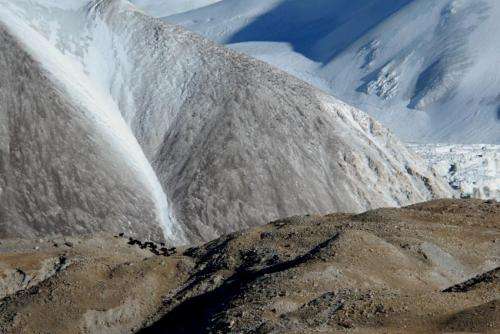Study: In wild yak society, moms are the real climbers

A new study led by the Wildlife Conservation Society says that in wild yak societies, it's the mothers that are the real climbers. The study found that mothers with young venture on steeper terrain and slightly higher elevation than either males or females without young.
The authors of the study expect that this strategy is an adaptive way to avoid predators and to access more nutritious food. Wild yaks are an endangered species occurring only on the Tibetan Plateau and closely related to North American bison.
The study, which appears in the June issue of the Journal of Mammalogy is authored by Joel Berger of the Wildlife Conservation Society and the John J. Craighead professor at University of Montana; Ellen Cheng of the Ugyen Wangchuck Institute for Conservation and Environment; Aili Kang of WCS; Michael Krebs of the University of Montana; Lishu Li of Beijing; Zhao Xin Lu and Buqiong Buzhou of Kekexili National Nature Reserve Management Bureau; and George Schaller of WCS and Panthera.
The study reported that wild yak females are found on mountainous slopes averaging 15,994 feet and in groups of about 30 whereas males were more frequently in valley bottoms and groups of just two.
Wild yaks are the largest grazer north of the tropics; while weights are rarely known, they are larger than bison. Domestic yaks were once bred with bison in northern Canada in the 1920's in an attempt to make for more cold-hearty animals.
The authors of the study say that the remoteness of the wild yak's habitat gives conservationists an opportunity to study a species that has not been largely impacted by humans. Bison on the other hand, have been greatly impacted by human activity and habitat fragmentation. Their ability to range in higher elevations has been largely lost although skulls have been found in the Rocky Mountains above 12,000 feet in Utah, Colorado, and Wyoming.
Lead author Joel Berger of WCS and University of Montana said: "Neither habitat destruction nor fragmentation are issues in the yak's home in far western China, and so there are amazing opportunities to learn about why males and females respond differently to climate change and biological challenges. But, more fundamentally, just as people climb mountains in the Himalayas because they are there, here we have a throwback to the Pleistocene; it is still here, and we by uniting people from different countries have the opportunity to conserve a species, not to mention an ecosystem and a landscape that is larger than all of Montana and Nebraska combined."
Journal information: Journal of Mammalogy
Provided by Wildlife Conservation Society


















